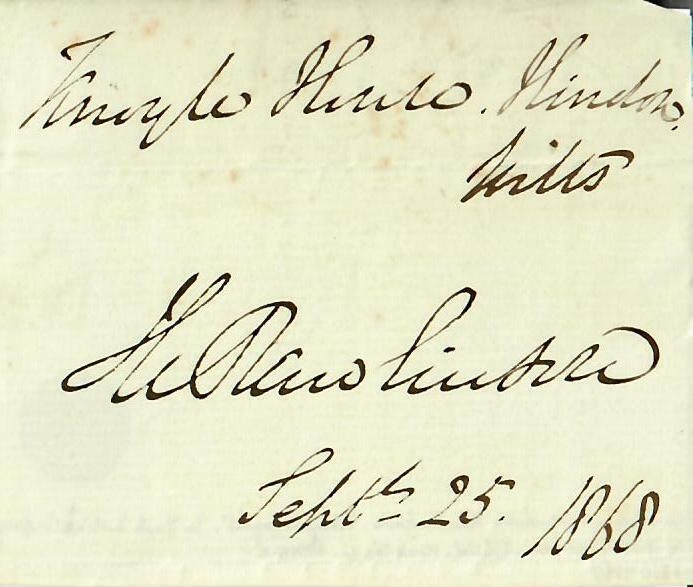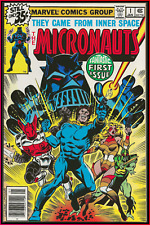When you click on links to various merchants on this site and make a purchase, this can result in this site earning a commission. Affiliate programs and affiliations include, but are not limited to, the eBay Partner Network.
Up
for sale a RARE! "1st Baron Rawlinson" Henry Rawlinson Hand Signed Album Page Dated 1868.
ES-8085E
General Henry Seymour Rawlinson, 1st Baron February 1864
– 28 March 1925), known as Sir
Henry Rawlinson, 2nd Baronet between 1895 and 1919, was a
senior British Army officer
in the First World
War who commanded the Fourth Army of the British Expeditionary Force at
the battles of well as the breaking of the Hindenburg Line (1918).
He commanded the Indian Army from
1920 to 1925. Rawlinson was born at Trent Manor in Dorset on 20 Henry
Rawlinson, 1st Baronet, was an Army officer, and a renowned Middle East scholar
who is generally recognised as the father of Assyriology. He received
his early formal education at Eton College. After
passing through commissioned officer training at the Royal Military College, Sandhurst,
Rawlinson entered the British Army as
a lieutenant in the King's Royal
Rifle Corps in India on 6 February 1884. His father arranged
for him to serve on the staff of a friend, General Sir Frederick Roberts, the
commander-in-chief in India. Rawlinson and the Roberts family remained close
friends throughout his life. When Roberts died in November, 1914, Rawlinson
wrote, "I feel as if I have lost my second father His first military experience was serving
in Burma during the 1886
uprising. In
1889, Rawlinson's mother died and he returned to Britain. He transferred to
the Coldstream
Guards, and was promoted to captain on 4 November 1891. He served
on General Herbert Kitchener's staff during the
advance on Omdurman in Sudan in 1898, and was promoted
to major on
25 January 1899 and to
brevet lieutenant-colonel on 26 January
1899. Rawlinson
served with distinction in a field command in the Second Boer War from
1899 to 1902, earning promotion to the local rank of colonel on
6 May 1901. He was in Western Transvaal during
early 1902, and lead a column taking part in the Battle of Rooiwal, the
last battle of the war (11 April 1902). Following the end of hostilities in
June 1902, he returned to the United Kingdom together with Lord Kitchener on
board the SS Orotava, which arrived in Southampton on 12
July. In a despatch dated
23 June 1902, Lord Kichener wrote of Rawlinson that he "possesses the
qualities of Staff Officer and Column Commander in the field. His characteristics
will always ensure him a front place in whatever he sets his mind to." For
his service in the war, Rawlinson was appointed a Companion of the Order of the Bath in
the April 1901 South Africa Honours list (the award was dated to 29 November
1900), and he
received the actual decoration after his return home, from Edward VII at Buckingham Palace on
24 October 1902. Rawlinson
had received the brevet rank of colonel in the South Africa Honours list
published on 26 June 1902, was promoted to the substantive rank of colonel on 1
April 1903, and named as commandant of the Army Staff
College. Rawlinson
was the first of three reforming Commandants who transformed the Staff College
into a real war school. The curriculum was modernised and updated, the teaching
given a new sense of purpose and instructors became 'Directing Staff' rather
than 'Professors', emphasising practicality. Major Godwin-Austen, historian of
the college, wrote: "Blessed with an extremely attractive personality, a handsome
appearance, high social standing, and more than an average share of this
world's goods, he was one to inspire his students unconsciously to follow in
his footsteps." Promoted
to March 1907, he was made Commander of 2nd Infantry Brigade at Aldershot that year
and, having been promoted to major-general on 10
May Commanding 3rd Division in 1910. In
manoeuvres in June 1912, he showed an appreciation of the use of artillery, the
Times's correspondent noting approvingly, "An operation of altogether
unusual character took place yesterday on Salisbury Plain when Major-General
Sir Henry Rawlinson's 3rd Division practised combined field firing on a scale,
which, so far as the writer can recall, has never been attempted before." The
historians Robin Prior and Trevor Wilson praise Rawlinson's foresight in
considering combining infantry with the fire-power of machine-guns and
artillery. After handing over the division to his successor in May 1914
Rawlinson went on leave, returning on the outbreak of war to briefly serve as
Director of Recruiting at the War Office. In September 1914 Rawlinson was
appointed General Officer Commanding 4th Division in France. Promoted October 1914, he then took command of the IV Corps.
In late September, the Belgian government formally requested British military
assistance in defending
Antwerp. IV Corps, acting under orders from the Cabinet, was chosen
to reinforce the city. Rawlinson arrived in Antwerp on 6 October. It was
soon obvious that the combined British, Belgian, and French forces were too
weak to hold the city, and Kitchener decided on an evacuation two days later. IV
Corps and the remnants of the Belgian Army successfully re-joined
Allied forces in Western Belgium, with the Cabinet returning Rawlinson's Corps
to Sir John
French's command. IV Corps marched into Ypres on the night of 13-14 October,
where the BEF was preparing to meet the German Army advancing Northwards.
Located at the centre of the British line, IV Corps met the main thrust
of the German attacks between 18-27 October and suffered heavy
casualties. On 28 October, IV Corps was put under the temporary command
of Douglas Haig while
Rawlinson went to England to oversee the preparation of 8th Division. When he returned in November
the German attacks on Ypres had died down. Rawlinson
wrote to the Conservative politician Lord Derby (24 December 1914)
forecasting that the Allies would win a war of attrition but it was unclear
whether this would take one, two or three years. In 1915, IV Corps formed
part of the First Army (General Douglas Haig). At the battle of Neuve Chapelle
(10–12 March 1915), he massed 340 guns. The weight of this bombardment on a
comparatively narrow front enabled the attackers to secure the village and
1,600 yd (1,500 m) of the German front line. The arrival of German
reinforcements prevented further advance. Rawlinson concluded that an enemy's
line of trenches could be broken 'with suitable artillery preparation' combined
with secrecy. He also drew a lesson, that trench warfare called for limited
advances: 'What I want to do now is what I call "Bite & Hold" –
bite off a piece of the enemy's line like Neuve Chapelle & hold it against
all counter-attacks...there ought to be no difficulty in holding against the
enemy's counter attacks & inflicting on him at least twice the loss that we
have suffered in making the bite'. At the end of 1915,
Rawlinson was considered for command of the First Army,
in succession to Haig but the command was instead given to Sir Charles
Monro. He was promoted to temporary general on 22
December 1915. Promoted to the substantive rank of lieutenant-general on 1
January 1916, Rawlinson assumed command of the new Fourth Army on
24 January 1916. The Fourth Army would play a major role in the planned Allied
offensive on the Somme.
He wrote in his diary: "It is not the lot of many men to command an army
of over half a million men".The Somme was originally conceived as a joint
Anglo-French offensive but owing to the demands of the Battle of Verdun, French
participation was greatly reduced, leaving the British, and especially
Rawlinson's inexperienced army, to bear the brunt of the offensive. On the
eve of the offensive, he "showed an attitude of absolute confidence". To
his diary he confided some uncertainties: "What the actual results will be
no one can say but I feel pretty confident of success myself though only after
heavy fighting. That the bosh [sic] will break and that a debacle will supervene
I do not believe..." He was not satisfied that the wire was well cut and
enemy trenches sufficiently "knocked about".









